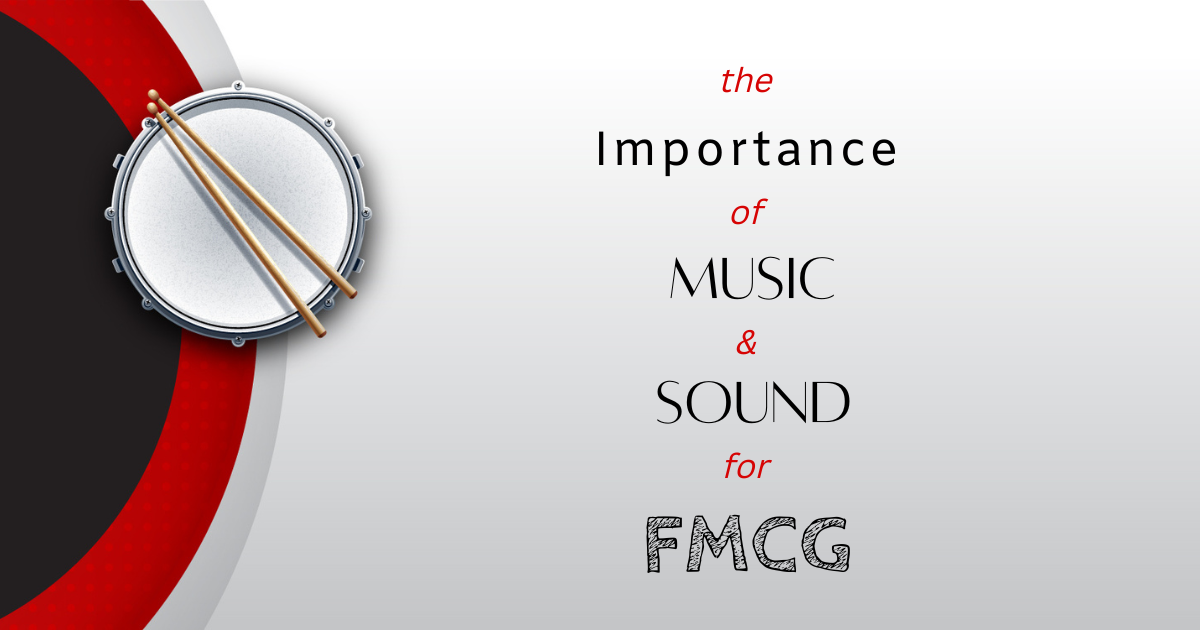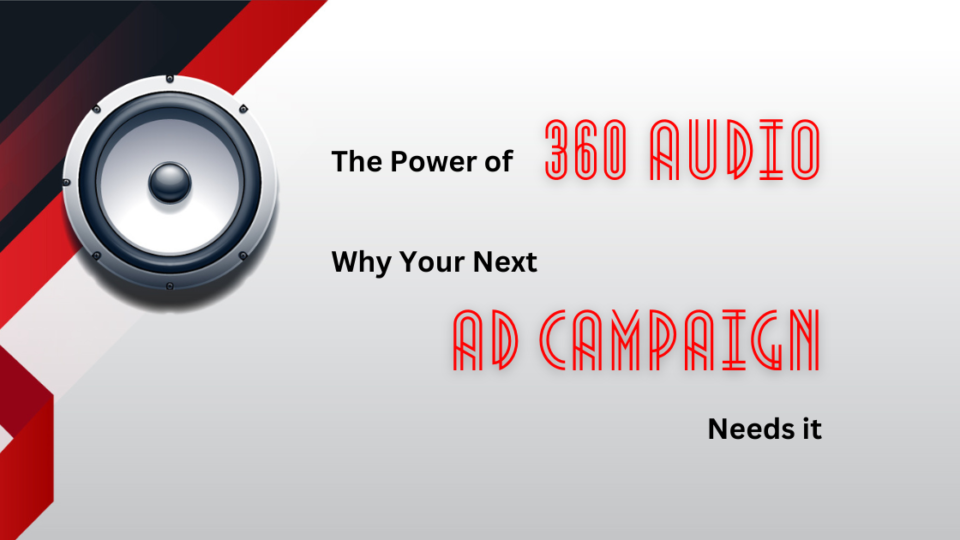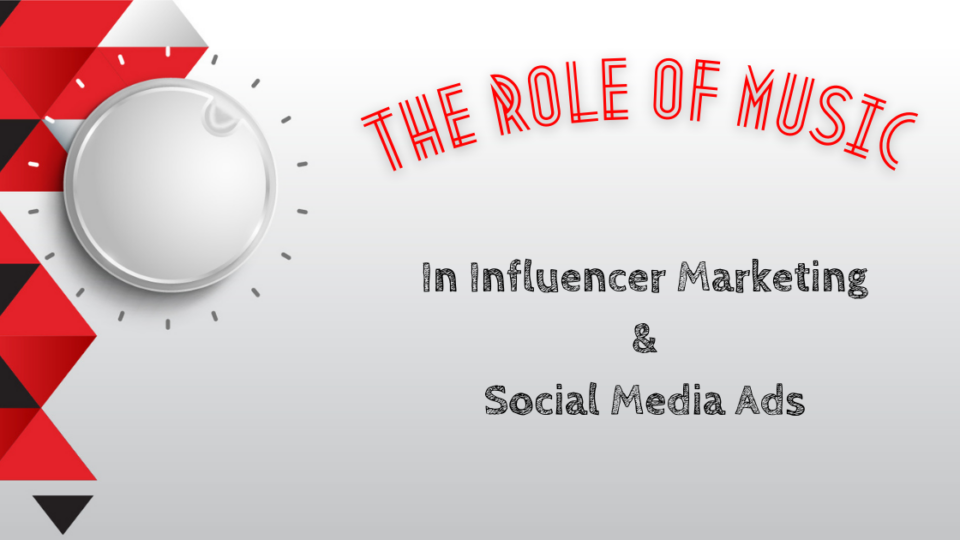Music and sound are incredibly powerful tools that can influence how people feel, act, and think. Whether it’s the sound of a catchy jingle or the steady beat to a song that causes you to dance involuntarily – music is an integral part of our lives. In particular, it has played an important role in Fast Moving Consumer Goods (FMCG) marketing over the years, as FMCG companies strive to build strong brand loyalty amongst their customers while driving sales growth. So today let’s explore some interesting insights on why music and sound have become so valuable within this industry, as well as some examples of great uses of music & sound.
In FMCG, why have music and sound become so important?
The FMCG sector is increasingly becoming more and more reliant on music and sound as part of its promotional strategies. Due to the continued growth of the industry, companies are seeking ways to elevate their brand identity, create memorable experiences, and engage their customers more deeply as a result. All of these things can be accomplished effectively with the help of music and sound.
Let’s take a look at why music and sound have become such valuable components of FMCG in recent times.
Developing an emotional connection with customers
Regardless of whether the music is happy or sad, nostalgic or anticipatory, music is one of the few forms of art that can evoke emotions in listeners. This emotional connection can be used by companies to build loyalty among their customers by using this emotional connection. A sensational sound or a song, when used in the right way, can help create a strong emotional bond between people and the brands they are most passionate about. This connection is invaluable for any FMCG company looking to stand out from its competitors.
Using music strategically to target specific emotions, such as joy, excitement, nostalgia, romance, relaxation, etc., is a powerful way for companies to reach their audiences. This allows them to connect on a personal level with customers by evoking positive associations with their products or services.
Enhancing Brand Identity
Music and sound not only evoke emotions in listeners but also help enhance a brand’s unique identity. A well-crafted soundscape can tell potential customers who you are as a brand before they even interact with your product or service. It allows them to recognize your company right away, even if it’s just through a split-second of audio.
Companies should take advantage of this by carefully crafting their soundscapes to ensure that their message is being communicated effectively.
Companies need to carefully consider how they want their music and sound to represent their brand before making any decisions. From the choice of instrumentation to the length of each track, many elements should be taken into account when curating music for FMCG products.
For example, Coca-Cola has long been associated with the classic jingle “I’d Like To Teach The World To Sing (In Perfect Harmony)”. This nostalgic track quickly brings back memories of childhood and associates the brand with happy times.
Increasing Engagement
Music and sound can also be used to increase engagement with customers. By utilizing music as a tool, companies can create more powerful and compelling experiences that leave a lasting impression on their audience. For example, many FMCG companies are using music to drive sales by creating unique soundtracks for different products and promotions. This helps keep customers engaged with the brand while also making them feel like they’re part of something special.
Companies like Pepsi have made effective use of music in this way by featuring well-known artists in their commercials and integrating popular songs into their marketing campaigns. This helps make consumers more interested in the brand and drives sales of its products.
Creating Memorable Experiences
Companies should look to use music and sound to create memorable experiences for their customers. Music has an undeniable ability to transport people in time – it can evoke memories of the past or create anticipation for the future. Companies can use this power to make sure their customers’ experiences are not only memorable but also emotionally charged.
In McDonald’s stores, for example, music is used in various ways to enhance the customer’s experience. There is a nostalgic atmosphere created by playing classic hits from the 1960s and 1970s within this restaurant, which encourages customers to stay longer and enjoy their meals at the restaurant.
Improving Store Atmosphere
Music and sound can also be used to help create a better atmosphere in stores. By using music to set a certain mood or tone, retailers are able to encourage customers to feel more relaxed and comfortable when browsing their products. This can lead to increased sales, as shoppers will be more likely to spend time looking around the store if they have been greeted with an inviting atmosphere. For example, a store stocking outdoor apparel could play a chilled-out playlist full of acoustic guitar and nature sounds to create an atmosphere that matches its brand identity.
Another way retailers can use sound to improve the atmosphere in shops is by installing digital signage systems with audio capabilities. These types of systems allow retailers to deliver messages and promotions directly to customers using audio as well as visuals. This can help create an interactive experience for shoppers, allowing them to engage with a product on a deeper level than just browsing it on shelves.
Increasing Exposure Through Audio Advertising
Music and sound also offer companies a great opportunity for advertising through audio channels such as radio, streaming services, or even podcasts. As more consumers move away from traditional media and towards digital platforms, audio advertising is becoming an increasingly important tool for FMCG companies. Audio ads can be tailored to specific demographics or markets and offer a cost-effective way of reaching potential customers.
An example of a successful audio campaign comes from Unilever’s use of music to promote its Magnum ice cream brand. The company created a unique jingle, which was broadcasted on radio stations across the UK and generated great awareness for the product.
Audio-based content can also be used in more creative ways to engage with customers. McDonald’s launched an app that allows users to create their own personalized ads using music and sound effects. The app has been hugely popular with younger audiences, providing a fun way for them to interact with the brand.
Creating a Lasting Impression
In addition to creating an emotional connection with customers and increasing exposure through audio channels, music and sound can also help create a lasting impression on consumers. With the right track, brands can create an impactful soundtrack that sticks in people’s minds long after they have used their product. This is invaluable for any company looking to build loyalty among its customer base.
An example of the successful use of music and sound in FMCG was Coca-Cola’s 2014 “Share a Coke” campaign. The campaign featured an uplifting, pop track that perfectly encapsulated the spirit and energy of the youthful target market. The song became so well-known that it even spawned its own viral dance craze on YouTube. This demonstrates how associating your brand with powerful music can have a lasting effect on audiences.
Concluding Remarks
To infer music, and sound are essential components of the FMCG industry. Music and sound can create an emotional connection with consumers, which helps to establish a strong brand identity. Additionally, strategically chosen music and sound can help to attract attention, influence purchase decisions, and enhance customer experiences. Therefore, it is important for brands in the FMCG industry to consider how they use music and sound in order to maximize the impact of their campaigns.
By understanding the role that music and sound play within their product offerings, FMCG companies can increase sales and better engage with customers. Ultimately, investing in quality audio-visual elements could be the difference between success or failure for a brand in this competitive sector.
Get in touch with Rabbeats to help you with your original music, and sound design requirements in your marketing campaigns.


